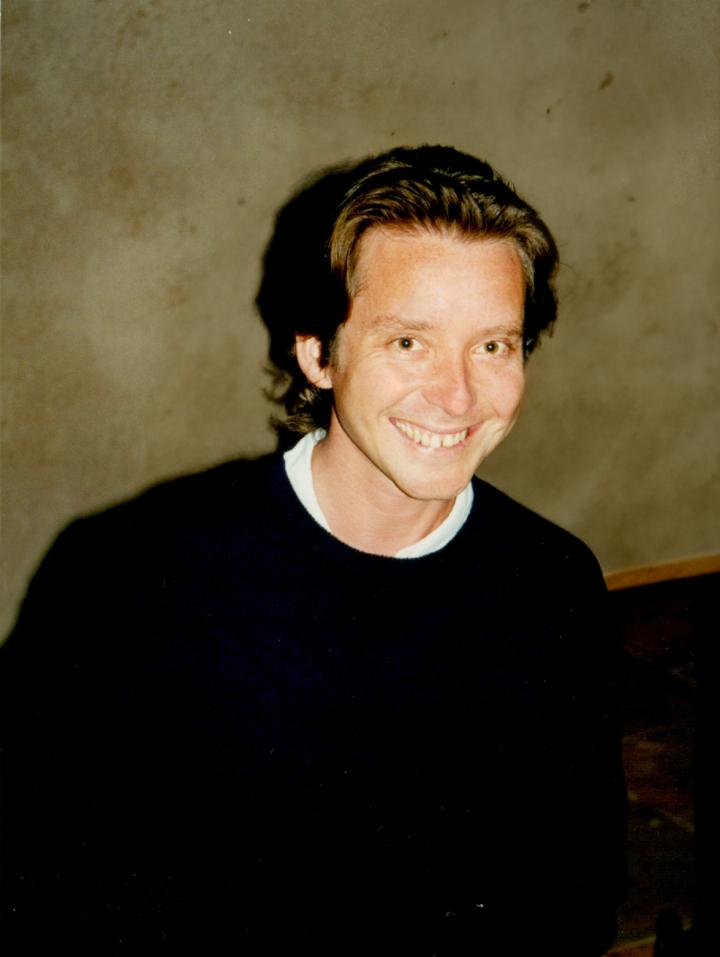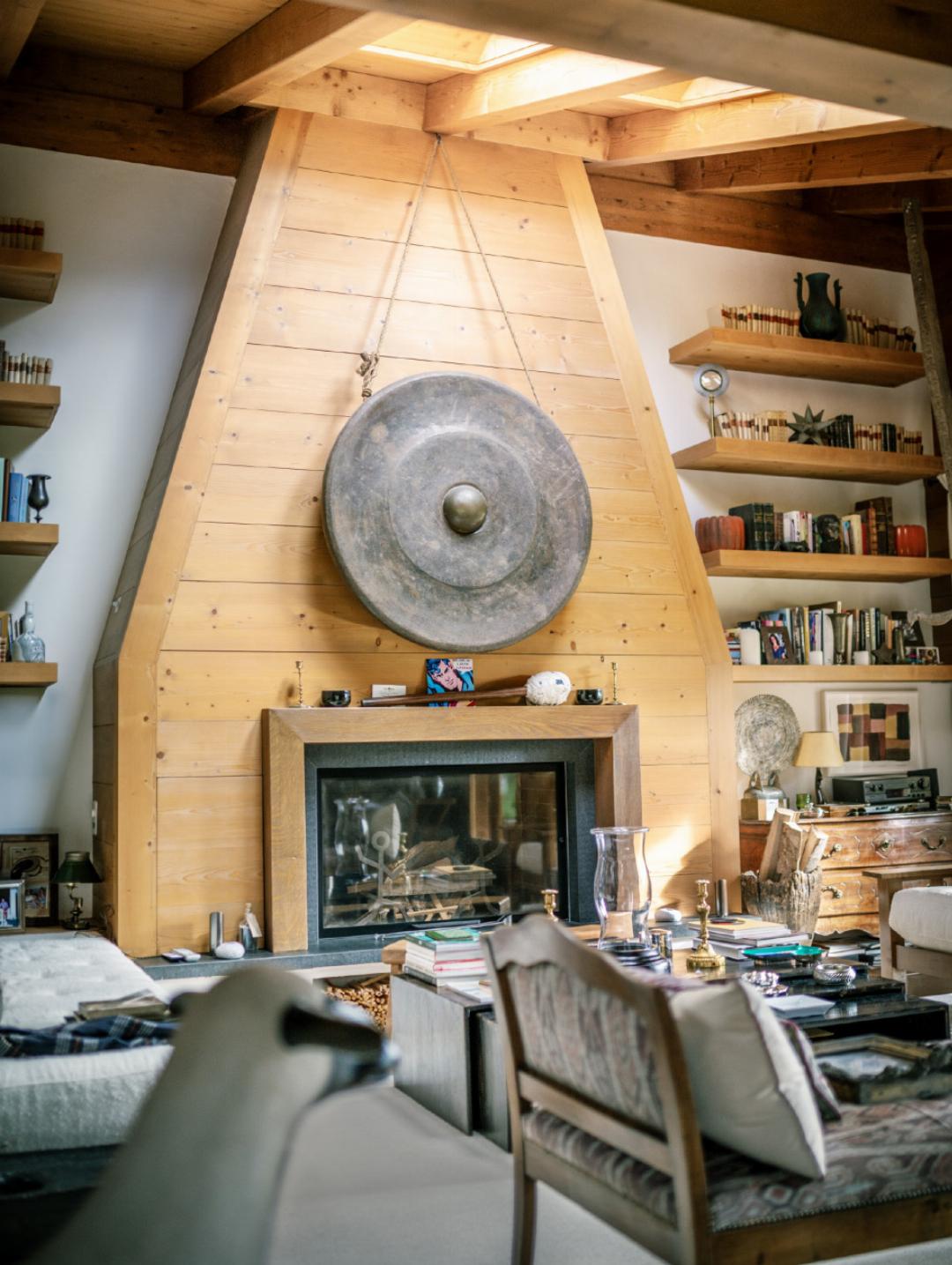Tino Zervudachi: A largesse of spirit
29.12.2023 Profile, Luxury, Editors Picks, Gstaad Living, Profile, BusinessTINO ZERVUDACHI was born and educated in London at Le Lycée Français and thereafter apprenticed to the celebrated British interior designer David Mlinaric. London was also the meeting place of his parents: an Irish mother and Greek father, from Egypt, who had moved ...
TINO ZERVUDACHI was born and educated in London at Le Lycée Français and thereafter apprenticed to the celebrated British interior designer David Mlinaric. London was also the meeting place of his parents: an Irish mother and Greek father, from Egypt, who had moved there a few years after New College, Oxford. At London’s Holland Park, his parents gregariously entertained a rich variety of ages and nationalities. As a result, his older brothers, twin sister, and he were the happy beneficiaries of this largesse of spirit which opened their eyes to the world as children without leaving home. Aside from designing residences, including floating ones, in North and South America, Asia, and Europe, his commercial projects include jewel and watch boutiques in Europe, as well as clubs and hotels on both sides of the Atlantic and Japan. Under construction and of special note are an historic hotel in Palm Beach, Florida as well as a brand-new club in Chicago with Robert A.M. Stern Architects. A longtime resident of Gstaad, he nevertheless keeps a foothold in London, Paris, and the Greek Island of Hydra.
Like his fellow Gstaad habitué Valentino, whom I interviewed in February 2023, Zervudachi too is a fan of the late French artists – husband and wife – François-Xavier (1927–2008) and Claude Lalanne (1924–2019). This white sheep sculpture, between his living and dining rooms in Gstaad, remains a signature piece of the late artists.
Over forty years ago, I first came here as a teenager to stay with cousins and later with my parents. The calm that one feels in the mountains, with its magical topography, pastoral farmland, and ancient rituals, gives me a tremendous sense of well being rooted in history; whilst the international crowd, that have been attracted to the village since the 1920’s, lends it a sense of constantly moving forward and developing. This confluence I have never seen elsewhere. There is a tremendous sense of family, and the local population is anchored to their environment which amplifies the tenor of the place.
A TRUE SENSE OF COMMUNITY
During the high season in winter, glamorous entertaining in beautiful chalets are combined with cosy, intimate fondue evenings in a local Stübli or at home in felt slippers by the fire which make the atmosphere truly special. Outings to independent, locally owned small businesses including restaurants in which restaurateurs welcome one warmly are a real pleasure, and make one feel, one is home: such as the Posthotel Rössli in Gstaad, the Sonnenhof in Saanen or the Rössli in Feutersoey. I must confess that I do miss some of the traditional places in the village that have since disappeared.
Here, I like to ski alone which I find therapeutic, as it really clears my head. I enjoy the ease of going at my own rhythm and not having to talk. Sometimes, I ski with my cousin Alexis or my twin sister Manuela when she is around, but very rarely in a group: far too social, and all that chatting on the ski lift takes away from the pleasure of enjoying the fresh air and the landscape, freeing me from the quotidian.
For decades I’ve happily been in a relationship with Louis-Charles, an Ancien Roséen and Gstaad habitué. His influence on me, more than anything, is that he has the most wonderful sense of humour, which means that we always have a good time; professionally that helps when there are problems to solve. My partner and I see Gstaad as a shared experience and part of who we both are. He because of his years at school here and so many friendships and memories, and I because it has become my home with many members of my family, and so many friends from all over and across three generations. We are both fortunate to be able to live in Gstaad and share it with Greece in the summer. Our time in COVID lock-down when we were here for the whole of the spring was an eye-opener. As a result, spending more spring months in the future is something we both look forward to very much, when I shall travel less for work.
Having visited so often, and for so long, I bought my own apartment pre-construction in 2006, enabling me to design the space as I wanted it to be: eliminating unwanted small bedrooms in the floor plan – with the stroke of my pen, not that of a hammer – to enlarge the living room, thereby creating a sort of loft in a barn. The location was particularly of interest to me on the edge of the village, affording me the luxury of going into the village on foot yet with unspoilt views to the fields and the mountains. Here, I have things from my distant past, and my family’s too, and things that I have acquired for the apartment with a sense that these things really belong here and together. I am attracted to the decorative arts and feel that all manner of objects can work together if carefully curated. There are things in this apartment from a trip to Indonesia where I visited whilst constructing this apartment that intermingle with contemporary art, coupled with 18th and 19th-century European decorative arts, including furniture. An ancient giant gong from a temple in southern Sumatra hangs over the fireplace, and a remarkable structural element made of carved iron-wood from a Traditional Long House in Sulawesi soars to the rafters of the barn-like ceiling. Though heterogeneous, these appear in harmony with an 18th-century Italian chest of drawers from my grandfather’s house on Lago Maggiore in Italy or a contemporary bronze sculpture by my twin sister Manuela – who twice exhibited at Saanen’s Chalet Farb in 2006 and 2011 – not to mention works on paper by Louise Bourgeois and Marlene Dumas.
In Austria and France, I have worked on many chalet interiors in the Alps and enjoy approaching them in different ways, though ultimately most clients want their ski chalet to feel local to its location and to be designed to enhance the qualities of alpine life. I relish that the interiors are nearly always intended for relaxation and family time which makes the process private and intimate. However mountain homes have become extremely luxurious in recent years: making the possibilities endless as well as housing great art in unusual spaces. A further component of alpine life promotes the wellness of mind and body, resulting in the opportunity to create private oases that can become a whole other world within the chalet.
My family has been coming to Gstaad since the 1930’s: my greatuncle Peter (1921–1993) – an Ancien Roséen owned the Galerie du Lac in Vevey; I remember my aunt, Despina Gripari née Venizelos (1927–2021), telling me that when she was a child the only way down from the Palace to the village in the winter was in a horse-drawn sleigh laden with fur to keep warm!
Today, whether in winter or summer, when the sun rises up behind the Wassengrat opposite the living room windows filling it with morning sun and then spreading across the whole apartment, and setting at the end of the day at the other side of the room, behind the Videmanette, I bless all my time in our magical valley.
ALAN NAZAR IPEKIAN
Bibliography
NATASHA FRASER
– Tino Zervudachi: a portfolio, 2012
– Tino Zervudachi: Interiors Around the World, 2022
Both books are in print, and the latter also available in French.
An ancient giant gong from a temple in southern Sumatra hangs over the fireplace, in Zervudachi’s Gstaad living room, flanked by an 18th-century Italian chest of drawers from his grandfather’s house on Lago Maggiore in Italy.






